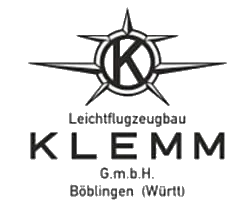McDonnell/Douglas
F-101 Voodoo
Role Fighter aircraft
Manufacturer McDonnell Aircraft Corporation
First flight 29 September 1954
Introduction May 1957
Retired 1972 (USAF)
1973 (ROCAF)
1982 (US ANG)
1984 (Canada)
Primary users United States Air Force (historical)
Republic of China Air Force (historical)
Royal Canadian Air Force (historical)
Number built 807
Developed from McDonnell XF-88 Voodoo
Variants McDonnell CF-101 Voodoo
.
History McDonnell/Douglas
McDonnell F-101 Voodoo First flight 29 September 1954
Introduction May 1957

The McDonnell F-101 Voodoo is a supersonic jet fighter designed and produced by the American McDonnell Aircraft Corporation.
Development of the F-101 commenced during the late 1940s as a long-range bomber escort (then known as a penetration fighter) for the United States Air Force's (USAF) Strategic Air Command (SAC)
Development of the F-101 commenced during the late 1940s as a long-range bomber escort (then known as a penetration fighter) for the United States Air Force's (USAF) Strategic Air Command (SAC). It was also adapted as a nuclear-armed fighter-bomber for the USAF's Tactical Air Command (TAC), and as a photo reconnaissance aircraft based on the same airframe. On 29 September 1954, it performed its maiden flight. The F-101A set a number of world speed records for jet-powered aircraft, including fastest airspeed, attaining 1,207.6 miles (1,943.4 km) per hour on 12 December 1957
Delays in the 1954 interceptor project led to demands for an interim interceptor aircraft design, a role that was eventually won by the F-101B Voodoo. This role required extensive modifications to add a large radar to the nose of the aircraft, a second crew member to operate it, and a new weapons bay using a rotating door that held its four AIM-4 Falcon missiles or two AIR-2 Genie rockets hidden within the airframe until it was time to be fired. The F-101B entered service with USAF Air Defense Command in 1959 and the Royal Canadian Air Force (RCAF) in 1961. While the Voodoo was a moderate success, it may have been more important as an evolutionary step towards its replacement in most roles, the F-4 Phantom II, one of the most successful Western fighter designs of the 1950s; the Phantom would retain the twin engines, twin crew for interception duties, and a tail mounted well above and behind the jet exhaust, although it was an evolution of the F3H Demon while the Voodoo was developed from the earlier XF-88 Voodoo.
0
KmCeiling
0
KmCombat RANGE
0
Km/hAircraft Speed
0
Max Crew
Photo Gallery
McDonnell/Douglas
McDonnell F-101 Voodoo First flight 29 September 1954
Introduction May 1957


McDonnell/Douglas
McDonnell F-101 Voodoo
First flight 29 September 1954
Introduction May 1957
General Info
-
-
- Crew: 2
- Length: 67 ft 5 in (20.55 m)
- Wingspan: 39 ft 8 in (12.09 m)
- Height: 18 ft 0 in (5.49 m)
- Wing area: 368 sq ft (34.2 m2)
-
Powerplant
-
- Empty weight: (12,925 kg)
- Gross weight: (20,713 kg)
- Max takeoff weight: (23,768 kg)
- Fuel capacity: 2,053 US gal (1,709 imp gal; 7,770 L) internals plus 2x optional 450 US gal (370 imp gal; 1,700 L) drop-tanks
- Powerplant: 2 × Pratt & Whitney J57-P-55 afterburning turbojet engines, 11,990 lbf (53.3 kN) thrust each dry, 16,900 lbf (75 kN) with afterburner
-
Performance
- Maximum speed: 1,134 mph (1,825 km/h, 985 kn) at 35,000 ft (11,000 m)
- Maximum speed: Mach 1.72
- Range: 1,520 mi (2,450 km, 1,320 nmi)
- Service ceiling: 58,400 ft (17,800 m)
- Wing loading: 124 lb/sq ft (610 kg/m2)
- Thrust/weight: 0.74
Armament
-
Armament
- Missiles: 4 (originally 6)× AIM-4 Falcon, or 2× AIR-2 Genie nuclear rockets, plus 2× AIM-4 Falcon
Avionics
- Hughes MG-13 fire control system
Links to Youtube & Others
The F101 was developed specifically for the Advanced Manned Strategic Aircraft, which became the B-1A. The F101 powered the four development aircraft from 1970 to 1981.
McDonnell/Douglas
McDonnell F-101 Voodoo
The McDonnell F-101 / RF-101 Voodoo was initially designed as a long-range bomber escort, but had its role adjusted to a nuclear-armed fighter-bomber and a photo reconnaissance aircraft
Youtube Link
The General Electric F101 is an afterburning turbofan jet engine. It powers the Rockwell B-1 Lancer strategic bomber fleet of the USAF.













